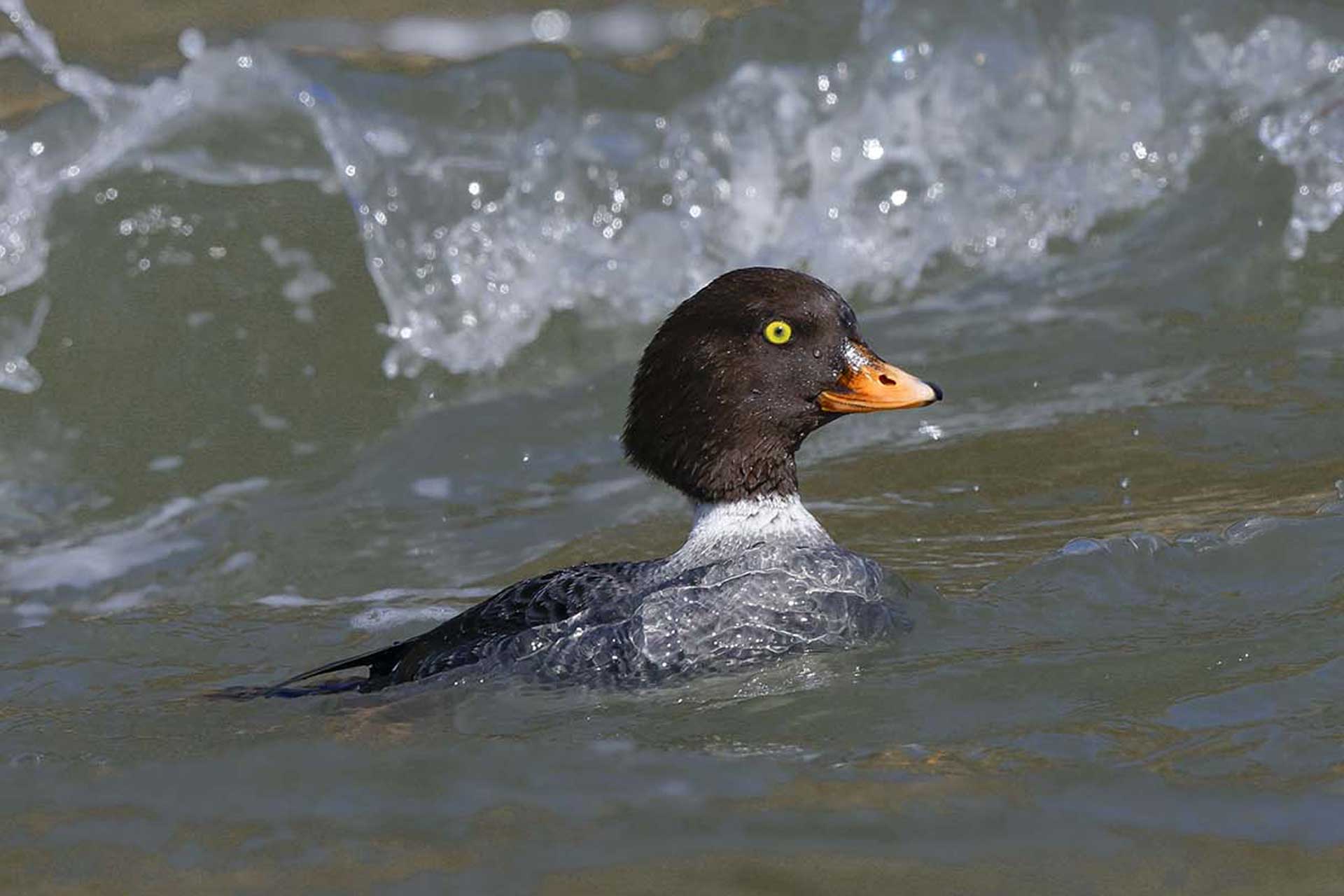Lead Institution(s): Ducks Unlimited Canada
Project Lead: Jonathan Thompson
Collaborator(s): Dan Esler (SFU) Sean Boyd (CWS), Danica Hogan (SFU)
Focal Species: Barrow’s Goldeneye (Bucephala islandica)
Project Description: As a result of recent post-breeding waterfowl surveys and satellite telemetry research, several sites used intensively by molting and fall staging Barrow’s Goldeneye (BAGO) were discovered in the Peace Parklands of northern Alberta. Most post-breeding BAGO were found on Cardinal Lake where fall numbers exceeded 4000 birds, placing this lake among the most important post-breeding sites currently recognized for this species. As a result of our work in 2009, a nearby site, Leddy Lake, was discovered to be hosting nearly 2000 post-breeding BAGO. The discovery of these significant post-breeding sites provides an important and readily accessible opportunity to investigate the poorly understood molting and fall staging ecology of this species. Furthermore, the ability to capture and mark large numbers of BAGO will help advance recent efforts to develop a better understanding of population structure and cross-seasonal habitat affiliations within the Pacific population of BAGO. Finally, it is also important to recognize that Bruce Power is considering several sites in the Cardinal Lake area as potential locations for western Canada’s first nuclear power plant. It is essential to better understand the ecology of post-breeding BAGO in the Peace Parklands to accurately predict or assess the impacts of this proposed development on this species. Through a combination of surveys, captures, an array of weights and measures, VHF telemetry, and satellite telemetry, we are addressing a suite of objectives related to the ecology of the remigial molt and fall staging periods, the importance of Cardinal Lake, and the remigial molt stage in the context of population delineation and population dynamics throughout the annual cycle.
SDJV116 FinalReport FY11
SDJV116 InterimReport FY10
SDJV116 InterimReport FY09
Related Publications
Forstner, T. M., W. S. Boyd, D. Esler, T. D. Bowman, J. L. Schamber, M. McAdie, J. E. Thompson, and D. J. Green. 2022. Migratory connectivity and variation in migration phenology within the Pacific population of Barrow’s Goldeneye (Bucephala islandica). Avian Conservation and Ecology 17(2):7. https://doi.org/10.5751/ACE-02195-170207
Hogan, D., D. Esler, and J.E. Thompson. 2013. Duration and Phenology of Remigial Molt of Barrow’s Goldeneye. Condor 115:762-768. https://doi.org/10.1525/cond.2013.120175
Hogan, D., D. Esler, and J.E. Thompson. 2013. Variation in body mass and foraging effort of Barrow’s goldeneyes during remigial molt. Auk 130:313-322. https://doi.org/10.1525/auk.2013.12048
Hogan, D., J.E. Thompson, and D. Esler. 2013. Survival of Barrow’s goldeneyes during remigial molt and fall staging. Journal of Wildlife Management 77:701-706. https://doi.org/10.1002/jwmg.507
Hogan, D., J.E. Thompson, D. Esler, and W.S. Boyd. 2011. Discovery of important postbreeding sites for Barrow’s goldeneye in the boreal transition zone of Alberta. Waterbirds 34:261-268. https://doi.org/10.1675/063.034.0301
Kemp, J., W. S. Boyd, T. M. Forstner, D. Esler, T.D. Bowman, D.C. Douglas, D. Hogan, M. McAdie, J.E. Thompson, M. Willie, D.J. Green. 2023. Pacific Barrow’s Goldeneye refine migratory phenology in response to overwintering temperatures and annual snowmelt. Ornithology 140. https://doi.org/10.1093/ornithology/ukad024
Willie, M., D. Esler, W. S. Boyd, T. Bowman, J. Schamber, and J. Thompson. 2020. Annual winter site fidelity of Barrow’s Goldeneyes in the Pacific. The Journal of Wildlife Management 84:161–171. https://doi.org/10.1002/jwmg.21767
